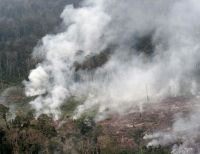
Dr Tristan Salles from the School of Geosciences.
Dr Salles said: “Earth’s surface is the living skin of our planet. Over geological time, this surface evolves with rivers fragmenting the landscape into an environmentally diverse range of habitats.
“However, these rivers not only carve canyons and form valleys, but play the role of Earth’s circulatory system as the main conduits for nutrient and sediment transfer from sources (mountains) to sinks (oceans).
“While modern science has a growing understanding of global biodiversity, we tend to view this through the prism of narrow expertise,” Dr Salles said. “This is like looking inside a house from just one window and thinking we understand its architecture.
“Our model connects physical, chemical and biological systems over half a billion years in five-million-year chunks at a resolution of five kilometres. This gives an unprecedented understanding of what has driven the shape and timing of species diversity,” he said.
The discovery in 1994 of the ancient Wollemi pine species in a secluded valley in the Blue Mountains west of Sydney gives us a glimpse into the holistic role that time, geology, hydrology, climate and genetics play in biodiversity and species survival.
The idea that landscapes play a role in the trajectory of life on Earth can be traced back to German naturalist and polymath Alexander von Humboldt. His work inspired Charles Darwin and Alfred Wallace, who were the first to note that animal species boundaries correspond to landscape discontinuities and gradients.














